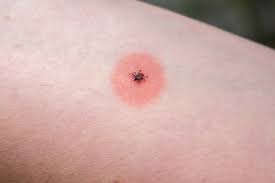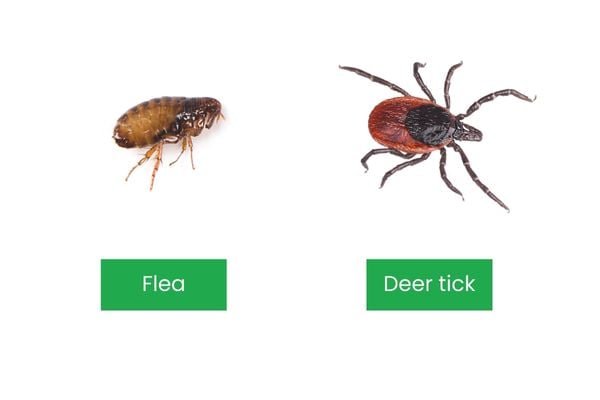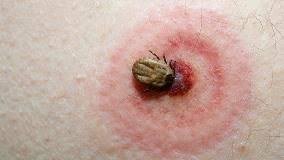Ticks are tiny but dangerous parasites that can transmit serious illnesses to humans and animals. Knowing how to know if tick is infected can be the difference between quick treatment and dangerous complications. Infected ticks can carry diseases like Lyme disease, Rocky Mountain spotted fever, and babesiosis, all of which can cause severe health problems. This guide will help you identify warning signs, understand tick-borne diseases, and take the right steps to stay safe.
Understanding Tick-Borne Diseases
Ticks are vectors, meaning they carry pathogens from one host to another. When they bite, they can transfer bacteria, viruses, or parasites into your bloodstream. Learning how to know if tick is infected starts with understanding the common diseases they spread. The most common include:
Lyme disease – caused by Borrelia burgdorferi.
Rocky Mountain spotted fever – caused by Rickettsia rickettsii.
Ehrlichiosis – caused by Ehrlichia bacteria.
Babesiosis – caused by a parasite infecting red blood cells.
How to Know If a Tick Is Infected – Key Signs in the Tick
Although you cannot always confirm an infection without lab testing, there are visual and behavioral clues. Here’s how to know if tick is infected by looking closely:
Unusual Body Color – Healthy ticks are usually brown or reddish-brown. A tick that appears grayish, bluish, or unusually pale might be engorged with infected blood.
Engorgement Level – A tick that is swollen and fully engorged has been feeding for a long time, increasing the chance of transmitting disease.
Sluggish or Immobile Behavior – Infected ticks may appear sluggish and less active.
Presence of Blood Spots on Body – Some infected ticks may show small, dark spots on their body caused by pathogens.
How to Identify a Dangerous Tick Bite in Humans
Another important part of how to know if tick is infected is recognizing symptoms in the bite area or in your body:
Bullseye Rash – A circular red rash with a clear center is a classic sign of Lyme disease.
Swelling and Warmth – Localized inflammation may indicate infection.
Oozing or Pus – Signs of bacterial infection at the bite site.
Fever and Chills – Could mean the infection has entered the bloodstream.
Muscle or Joint Pain – Common in tick-borne illnesses.
When to Seek Medical Help
You should seek medical attention immediately if:
The tick was attached for more than 24 hours.
You develop flu-like symptoms within days or weeks of the bite.
The bite site becomes increasingly painful, swollen, or warm.
You notice an expanding rash.
Knowing how to know if tick is infected can help you explain your concerns to your healthcare provider, which speeds up diagnosis and treatment.
Laboratory Testing for Tick Infection
If you want a definitive answer, lab testing is the only way to confirm if the tick was infected. Experts may:
Identify the species of tick under a microscope.
Test for pathogens using PCR (polymerase chain reaction).
Blood tests to check if you’ve been exposed to a tick-borne pathogen.
Preventing Tick-Borne Infections
Prevention is the best protection. Even if you learn how to know if tick is infected, avoiding bites in the first place is ideal. Key prevention tips include:
Wear long sleeves and pants when outdoors in tick-prone areas.
Use tick repellents with DEET or permethrin.
Perform thorough body checks after outdoor activities.
Keep lawns trimmed and remove leaf litter.
Tick Removal – The Safe Way
If you find a tick attached to your skin:
Use fine-tipped tweezers to grasp it as close to the skin as possible.
Pull upward steadily without twisting.
Disinfect the bite area with antiseptic.
Save the tick in a sealed container for testing if needed.
This step is crucial in how to know if tick is infected because having the tick helps experts test for disease.
Myths About Infected Ticks
Many people believe they can tell instantly if a tick is infected just by looking at it. While there are signs, they are not always reliable. You can’t confirm an infection without proper testing. This is why the knowledge of how to know if tick is infected must be combined with professional medical advice.
Final Thoughts
Ticks may be small, but the diseases they carry can have life-changing effects. Recognizing signs of infection in both the tick and the bite can help you seek treatment early. Understanding how to know if tick is infected gives you an advantage in protecting yourself and your loved ones from serious health risks. Always stay alert, use prevention strategies, and consult medical professionals when in doubt.





